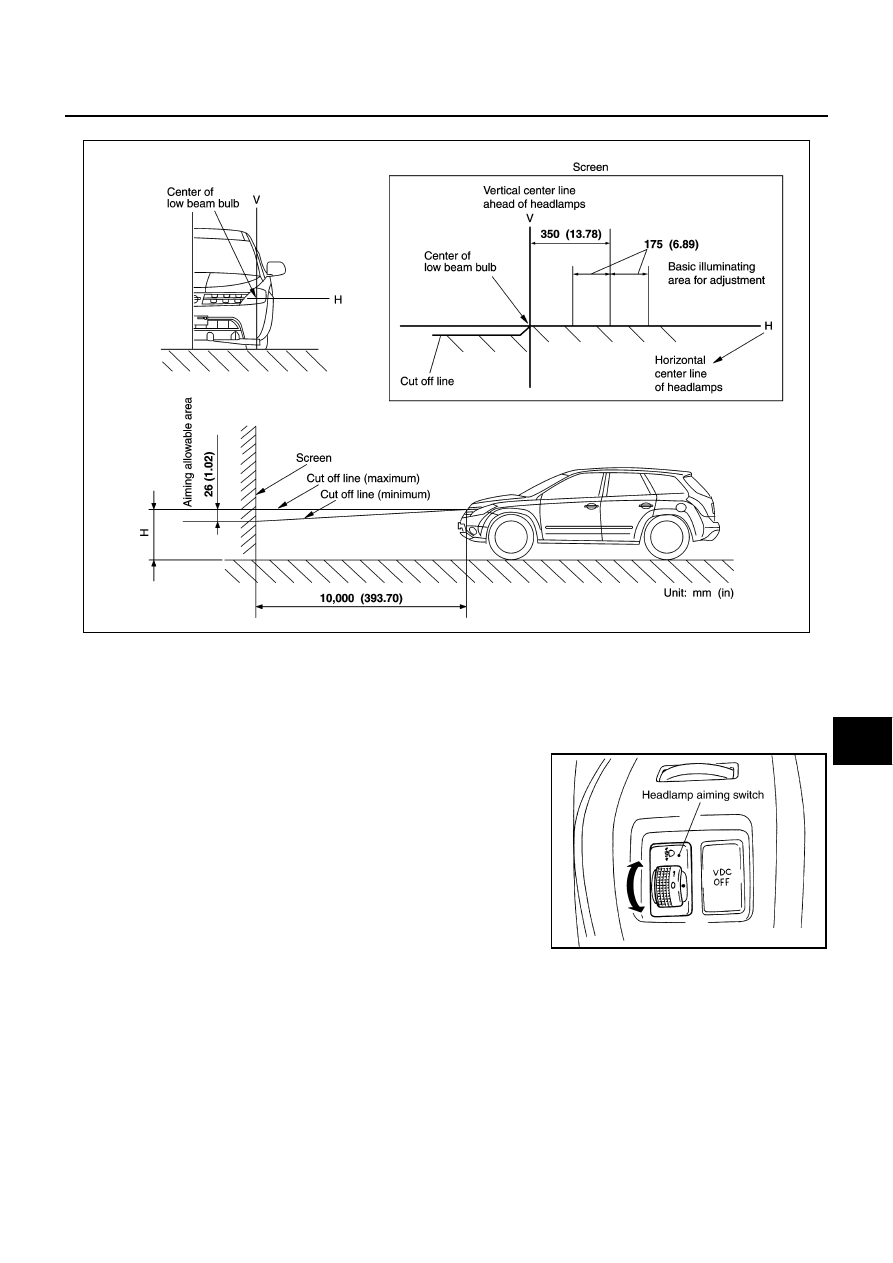Nissan Murano Z50 (2005 year). Manual - part 178

HEADLAMP - XENON TYPE -
LT-35
C
D
E
F
G
H
I
J
L
M
A
B
LT
Revision: 2005 August
2005 Murano
ADJUSTMENT USING AN ADJUSTMENT SCREEN (LIGHT/DARK BORDERLINE)
If the vehicle front body has been repaired and/or the headlamp assembly has been replaced, check aiming.
Use the aiming chart shown in the figure.
●
Basic illumination area for adjustment should be within the range shown on the aiming chart.
Adjust headlamp accordingly.
CAUTION:
Be sure aiming switch is set to “0” when performing aiming
adjustment.
PKIB2152E
PKIB2153E